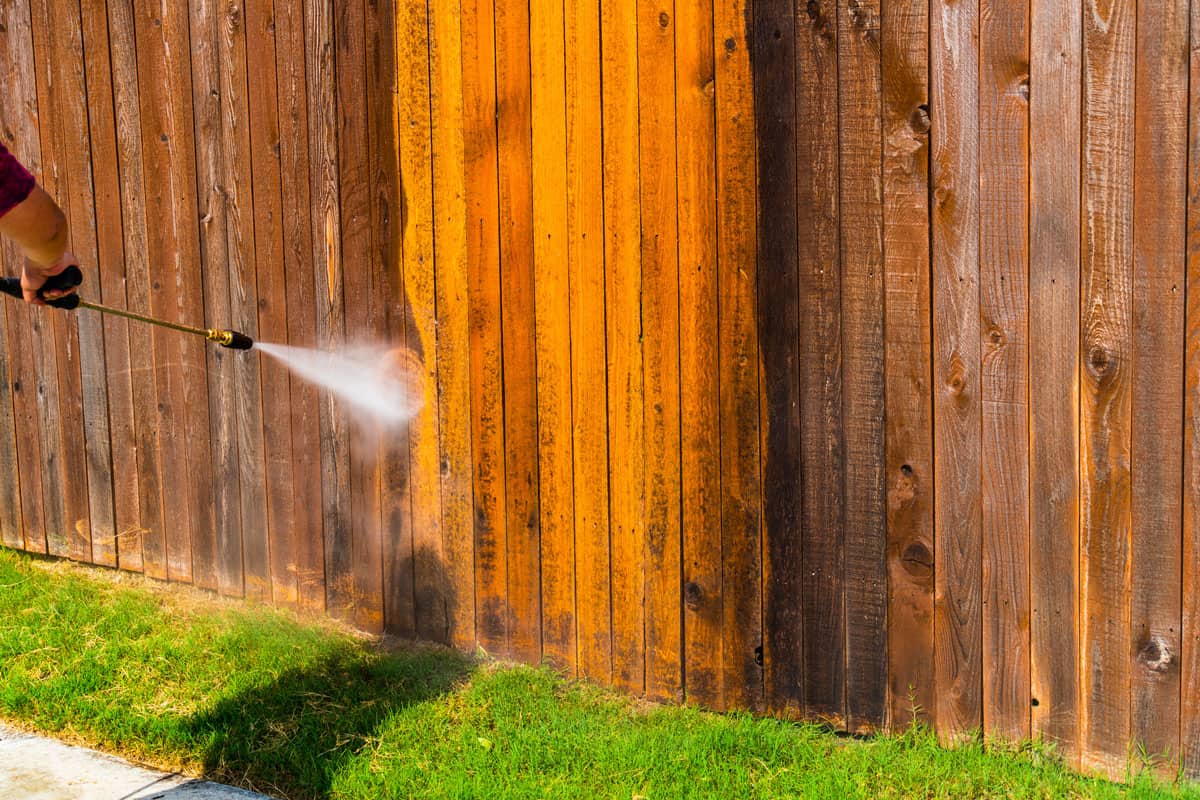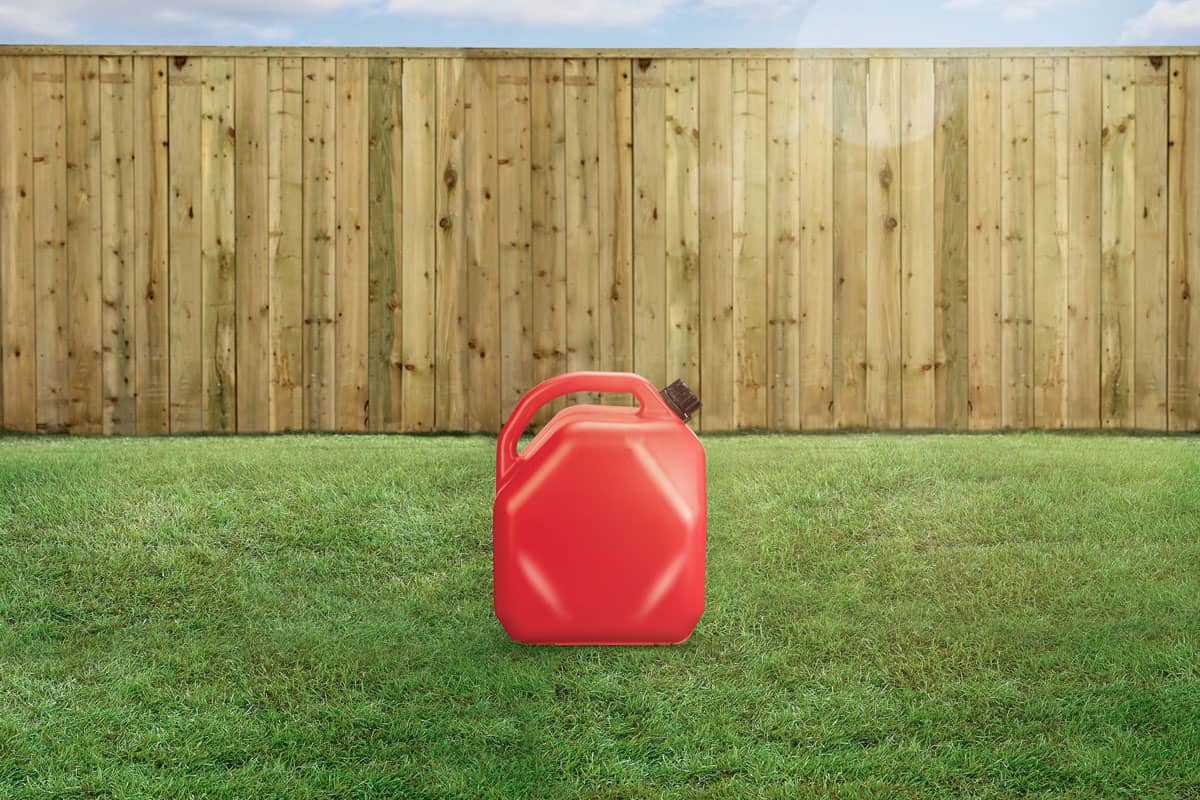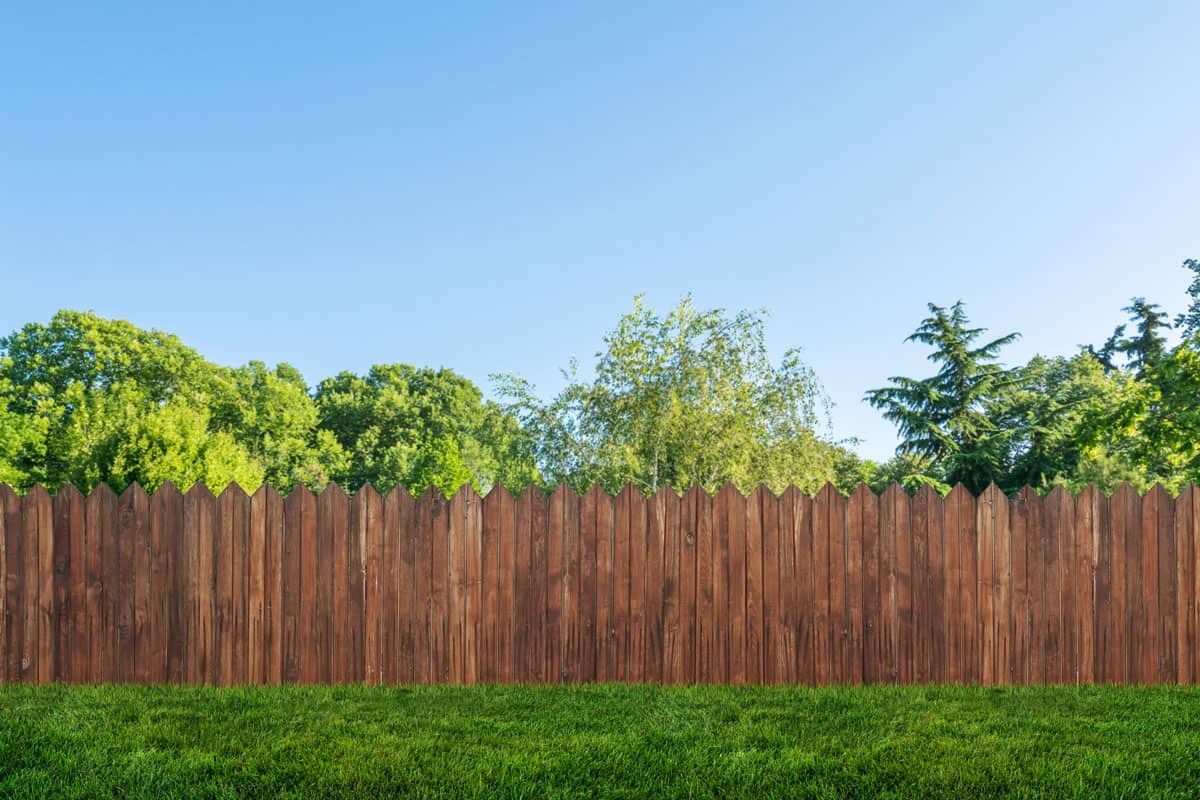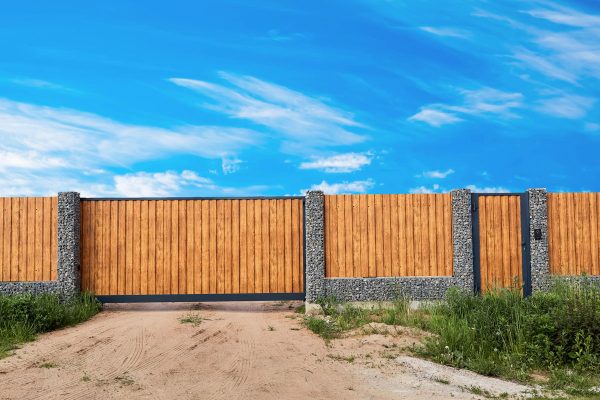Wouldn’t you want your fence to look great for the longest time? However, with exposure to the weather, this might be impossible. Can oiling your timber fence be a solution? Let’s find out more with answers from the experts.
Oiling your timber fence will preserve it for longer, and below is a step-by-step guideline on how to successfully oil your fence:
- Clear away grass and debris
- Clean your fence
- Repair damage on your fence
- Apply the oil
Your fence enhances the appearance of your home and maintains for a longer time by oiling it. Keep reading to learn the reasons for oiling your fence, and the types of oil you can use. Also, gain some helpful tips on how to oil your fence to achieve great results.

How Do You Apply Oil To Your Timber Fence?
For best results, it is best to prepare the area around the fence, clean your fence and then apply the oil. The following are steps you can follow to oil your fence.

Clear Away Grass And Debris
Check out this electric edger on Amazon.
You can start by cutting the grass or vegetation near your fence using a mower or the electric edger like the one shown above. Clear away all debris and leaves using a rake.
Alternatively, place a plastic sheet on either side of your fence. Take your old bedsheets or cloth tarps and put them on the plastic sheet. By doing this, you will protect the vegetation from the bleach solution.
Clean Your Fence
Applying oil to a dirty fence will trap dirt, dust, mold, algae, and other particulates, which could prevent the oil from sticking to the wood.
Use A Bleach Solution

You can clean your fence using a bleach solution to remove mildew, mold, and stains to restore its attractiveness. Mix 1 quart of household bleach and 1 gallon of water in a bucket and stir. Pour this solution into your garden sprayer.
You could use a power sprayer, though you need to use the correct pressure to avoid the wood from splintering.
Before you spray, wet your fence using a garden hose, and afterward, spray the bleach solution starting from the top, working downwards, from one fence post to another.
Let the bleach solution remain on the wood for 5 minutes, before rinsing thoroughly with water using your garden hose.
Scrub And Sand Your Fence
If there is any stubborn mildew, mold, or paint, you can apply the bleach solution to your fence a second time. Spray only on the affected parts, and then scrub with a stiff-bristled brush. Rinse thoroughly with water after you are sure all the stains are gone.
Next, smooth your fence by sanding it with 100-grit sandpaper, and then allow it to dry for at least 24 hours or until it completely dries.
Repair Damage On Your Fence
Check your fence for damage. Fix back the parts that are broken or splintered using waterproof wood glue like the one shown below. Using a hammer, push down raised nail heads, and tighten any loose screws using a drill. Replace any rotten wood with treated lumber.
Check out this wood glue on Amazon.
Apply The Oil
There are many types of wood oil as explained in the next paragraph that you can choose from to apply to your fence.
In that respect, there are different tools you can use to apply oil such as brushes, rollers, and pads among others. Find out from an expert or the manual, the correct tool you can use to achieve good results.
Oil-based stains are an excellent option, and if you choose it, fill your sprayer with the oil-based stain, and spray 12 inches away from the fence. Work from the top downward, spraying on one fence post or picket at a time.
Oil-based stains are water resistant that nourish wood to keep it supple. It stops your fence from drying out to prevent shrinkage, splitting, warping, or cracking, giving it a long lifespan.
Types Of Wood Oil
Oil finishes are generally eco-friendly, producing great textured grain patterns. There are different ways of applying oil to wood, thus you need to check the manual. Some recommend spraying, rolling, and using a brush or cloth, among other methods.
Oils offer different levels of protection and durability. The following are the most common types of oil finishes you can use on your timber fence:
Linseed Oil
Also known as flaxseed oil, linseed oil is one of the most common wood finishes in the world. It penetrates deep into the wood, protecting it against scratches and changes in humid levels.
It enhances the color and grain of your fence. Your fence may bleed if you live in areas with extreme temperature changes. For example, from hot summers to cold winters.
Check out this linseed oil on Amazon.
It is available in either raw or boiled form. Raw linseed can take longer to dry, and boiled linseed like the one shown above has some potentially harmful drying compounds. Both types do not protect too well against mold and mildew.
Tung Oil
Check out this tung oil on Amazon.
Tung oil is clear and is one of the oldest wood finishes in the world. The seeds from the Tung tree found in Eastern Asia, are pressed to produce the oil. It is clear and dries quickly. It is waterproof, providing excellent protection against moisture.
Mineral Oil
Mineral oil is made from processed petroleum that is highly refined and purified. It seeps into the wood to protect against fluctuations in humidity, making it resistant to warping and cracking. It boosts wood color and adds volume to the grain.
The main downside of this oil is that it is not waterproof and you may have to apply it many times.
Teak Oil
Check out this teak oil on Amazon.
Teak oil like the one above is made from Tung and linseed oil, with additives added to the mixture. It protects against UV rays and gives the wood a strong finish. When applying the oil to the wood, remove the excess oil before it dries. Add additional coats every 24 hours. To maintain your fence, apply a fresh layer once or twice a year.
Danish Oil
Danish oil does not have a defined formula, and its composition varies between manufacturers. It is often made from polymerized linseed oil. Other ingredients that are sometimes added are thinners, thickeners, and drying agents.
This oil dries to a hard satin finish, darkening your fence slightly and waterproofing it.
Why Do You Need To Oil Your Fence?

If your fence has faded, you can restore the color by oiling, bringing life back to the wood. Besides, the oil penetrates, replacing the natural oils lost due to exposure to harsh weather or normal wear and tear.
Protect your fence by oiling it to last longer by preventing the following problems:
- Degradation of your wooden fence due to the UV rays leads to faster aging causing it to become brittle and grey.
- Rot due to mold, algae, and mildew that leaves green stains that can be difficult to remove.
- Rot due to moisture from the natural elements such as rain and snow.
- Attack by insects that leave tiny holes and small mounds of sawdust that looks like talc.
Tips To Oil Your Fence Successfully

For the best results, you can benefit from the following tips:
- Once you open the tin of oil stain, stir the contents thoroughly for a few minutes. This way, you are able to spread the color pigments and the oil components evenly throughout the mixture to avoid settling at the bottom.
- It’s important to carry out a test on wood similar to your fence or an unnoticeable part of your fence. Apply the oil stain and let it completely dry to see how your fence will turn out. This prevents you from picking the wrong type of oil and color.
- If you can, apply the oil when the weather is dry. You can still oil your fence when it is damp, but the finish might not be of high quality like when the weather is dry.
In Closing

With different weather patterns that occur throughout the year, one of the negative effects your fence is likely to go through includes the stripping of oil from the wood. This can cause your fence to warp, crack, or splinter, among other issues, reducing its lifespan.
Oiling your fence, however, is a solution. With several oils to choose from, applying wood oil will improve the appearance of your fence and extend its life. You can also benefit from tips on how to apply oil successfully to the wood.
Check out our previous posts on how to varnish your bamboo fence when it fades:







![Close board fence erected around a garden for privacy with wooden fencing panels, concrete posts and kickboards for added durability, Are Gravel Boards Treated? [And How Long Do They Last]](https://fencefixation.com/wp-content/uploads/2022/06/Close-board-fence-erected-around-a-garden-for-privacy-with-wooden-fencing-panels-concrete-posts-and-kickboards-for-added-durability-600x400.jpg)
![Wooden fence with green lawn and trees, Stepped Vs. Racked Fence Installation [Where & How To Use Each]](https://fencefixation.com/wp-content/uploads/2022/06/Wooden-fence-with-green-lawn-and-trees-600x400.jpg)